When I get stressed, I knit.

There are any numbers of reasons why: I find reading a pattern and trying to make the picture, or the chart, or the words in front of me a real and tangible thing pretty fulfilling. I love colors. I have a soft spot for sheep (and other wool-producing animals). But most of all, I think, the act of creating, as Kelley has so often pointed out in her super-fantastic “Making Magic” posts, is remarkably fulfilling….even if sometimes it’s just making knots and a big mess.
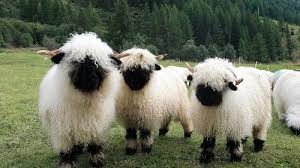
I’ve been knitting a lot lately.
But that’s ok. Because not only is it a productive (and potentially snuggly) way to deal with stress, but knitting is a project that can (generally) fit easily into your blanket fort, and a perfect craft to include in your Hermitage Month plans. Plus, there are few handicrafts as rooted in literature as knitting. From the metaphorical “spinning of yarns” to “winding it up” again, yarny crafts and booky things go together quite well. Personally, I love listening to audiobooks while knitting, as it fulfills my love for stories while absolving me of the need to turn pages, and fulfills my desire to shut out the world for a few minutes. (And for those who enjoy tv or movie while crafting, don’t forget about all the fun that’s available on Hoopla!)
So today, as I work my way across another row, I thought I’d offer a few books that really blend knitting and literature well that I’ve enjoyed during my Hermitage Month projects, in the hopes that they may expand your literary and crafty horizons…
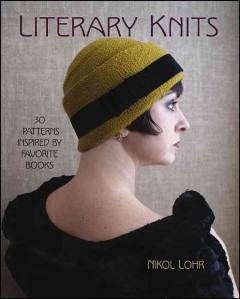 Literary Knits: There aren’t too many books that blend books and yarn so well as this books of patterns from Nikol Lohr. Inspired by a love of reading (and a love of knitting), Lohr compiled a collection of knitting patterns inspired by characters and passages from classic literature. Best of all, there are a number of patterns in here that are pretty and functional (like Jo Mittens, inspired by Little Women), which is not always a combination one finds in knitting pattern books. I think the Jane Eyre shawl is lovely, but my ultimate favorite here is the Sydney Carton Cowl. Not only was Sydney Carton one of my first loves, but Lohr developed Morse code into stitches so that you can knit his famous line from the end of A Tale of Two Cities…or, indeed, any other word or phrase you like. Madame Defarge would approve!
Literary Knits: There aren’t too many books that blend books and yarn so well as this books of patterns from Nikol Lohr. Inspired by a love of reading (and a love of knitting), Lohr compiled a collection of knitting patterns inspired by characters and passages from classic literature. Best of all, there are a number of patterns in here that are pretty and functional (like Jo Mittens, inspired by Little Women), which is not always a combination one finds in knitting pattern books. I think the Jane Eyre shawl is lovely, but my ultimate favorite here is the Sydney Carton Cowl. Not only was Sydney Carton one of my first loves, but Lohr developed Morse code into stitches so that you can knit his famous line from the end of A Tale of Two Cities…or, indeed, any other word or phrase you like. Madame Defarge would approve!
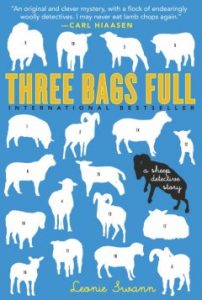 Three Bags Full: I might have mentioned this title previously, but we’re going to talk about it again, because this remains one of the most clever, and surprisingly emotional murder mysteries I’ve read. The cast of characters are a flock of Irish sheep–and very lucky sheep, indeed. Their shepherd reads to them every evening, developing both their intellect and their imagination. But when their shepherd is murdered, it falls to this band of intrepid, woolly, would-be detectives to discover what happened. Leonie Swann does a fantastic job making these sheep into well-rounded characters, with hopes and fears and relationships that are tested over the course of their quest, without ever forgetting that these are sheep (the way they go about
Three Bags Full: I might have mentioned this title previously, but we’re going to talk about it again, because this remains one of the most clever, and surprisingly emotional murder mysteries I’ve read. The cast of characters are a flock of Irish sheep–and very lucky sheep, indeed. Their shepherd reads to them every evening, developing both their intellect and their imagination. But when their shepherd is murdered, it falls to this band of intrepid, woolly, would-be detectives to discover what happened. Leonie Swann does a fantastic job making these sheep into well-rounded characters, with hopes and fears and relationships that are tested over the course of their quest, without ever forgetting that these are sheep (the way they go about 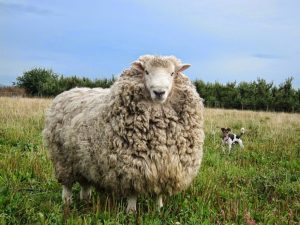 revealing the murderer is particularly clever). Their eventual reward is absolutely priceless, as well, making this mystery a sheer delight. Plus, there is a merino sheep (see right) named “Mopple the Whale”, which may be my favorite name in the history of literature.
revealing the murderer is particularly clever). Their eventual reward is absolutely priceless, as well, making this mystery a sheer delight. Plus, there is a merino sheep (see right) named “Mopple the Whale”, which may be my favorite name in the history of literature.
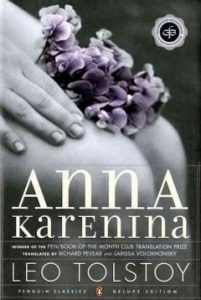 Anna Karenina: For those of you looking for a good, hefty blanket fort read, I can’t recommend this Russian classic highly enough. Set in late 19th-century Russia, it opens with a bang (literally), as a train accident brings two star-crossed lovers together, and continues to look at class, gender, the threat of industrialization in Russia…and is also a really powerful, gripping story about the people who inhabit this changing world. As a Russian major, I’ve read this book six times, and each time I do, I find something else to enjoy and appreciate. And, for the yarny readers, there’s plenty to enjoy here. There’s a long-running 19th-century metaphor where the good girls knit and the bad girls (and for “bad”, read “flirty” or “sexually transgressive”) girls crochet. Anna’s crocheting here is often a metaphor for her knotted emotion, while Kitty (her once-time friend who grows to love the intellectual Levin) knits.
Anna Karenina: For those of you looking for a good, hefty blanket fort read, I can’t recommend this Russian classic highly enough. Set in late 19th-century Russia, it opens with a bang (literally), as a train accident brings two star-crossed lovers together, and continues to look at class, gender, the threat of industrialization in Russia…and is also a really powerful, gripping story about the people who inhabit this changing world. As a Russian major, I’ve read this book six times, and each time I do, I find something else to enjoy and appreciate. And, for the yarny readers, there’s plenty to enjoy here. There’s a long-running 19th-century metaphor where the good girls knit and the bad girls (and for “bad”, read “flirty” or “sexually transgressive”) girls crochet. Anna’s crocheting here is often a metaphor for her knotted emotion, while Kitty (her once-time friend who grows to love the intellectual Levin) knits.
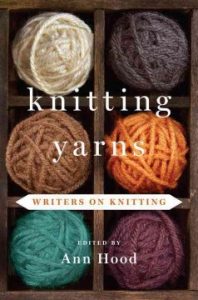 Kntting Yarns: Writers on Knitting: If you are a bookish person who enjoys yarny crafts, rejoice! You’re in good company! This collection of essays bring together a wonderful selection of writers who all touch on their relationships to yarn, sheep, and the art of knitting. From Barbara Kingsolver’s discussion about shearing a sheep to Ann Patchett’s tale about knitting a scarf for one of the most important people in her life, to Alison Lurie’s charming essay on books, superstition and knitting that you can read here, this is a book that is wonderful for the yarny among us, but may also just convince a few newcomers to the field to strike up a relationship with yarn crafts themselves!
Kntting Yarns: Writers on Knitting: If you are a bookish person who enjoys yarny crafts, rejoice! You’re in good company! This collection of essays bring together a wonderful selection of writers who all touch on their relationships to yarn, sheep, and the art of knitting. From Barbara Kingsolver’s discussion about shearing a sheep to Ann Patchett’s tale about knitting a scarf for one of the most important people in her life, to Alison Lurie’s charming essay on books, superstition and knitting that you can read here, this is a book that is wonderful for the yarny among us, but may also just convince a few newcomers to the field to strike up a relationship with yarn crafts themselves!
Until later, beloved patrons…happy Hermitage Month!
